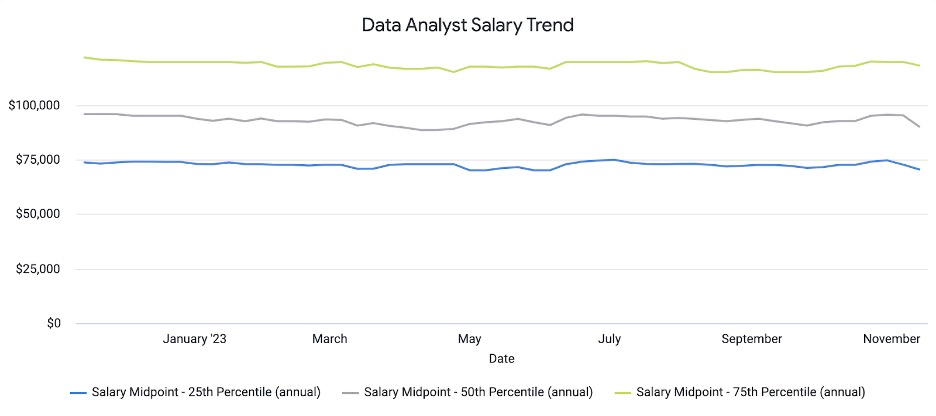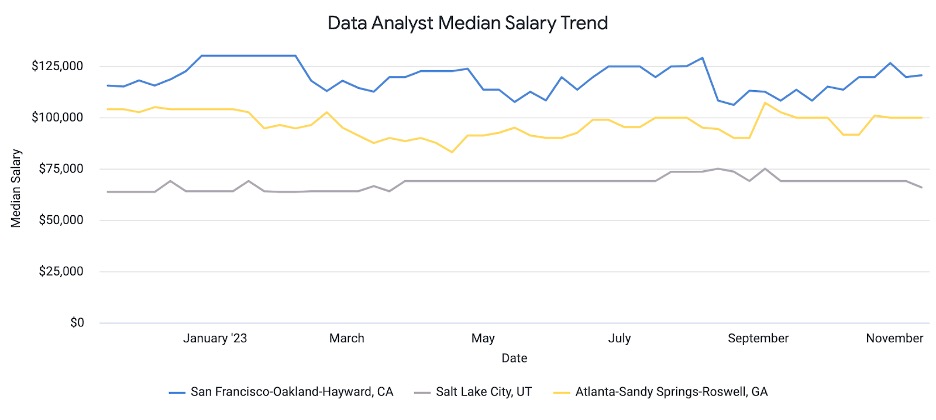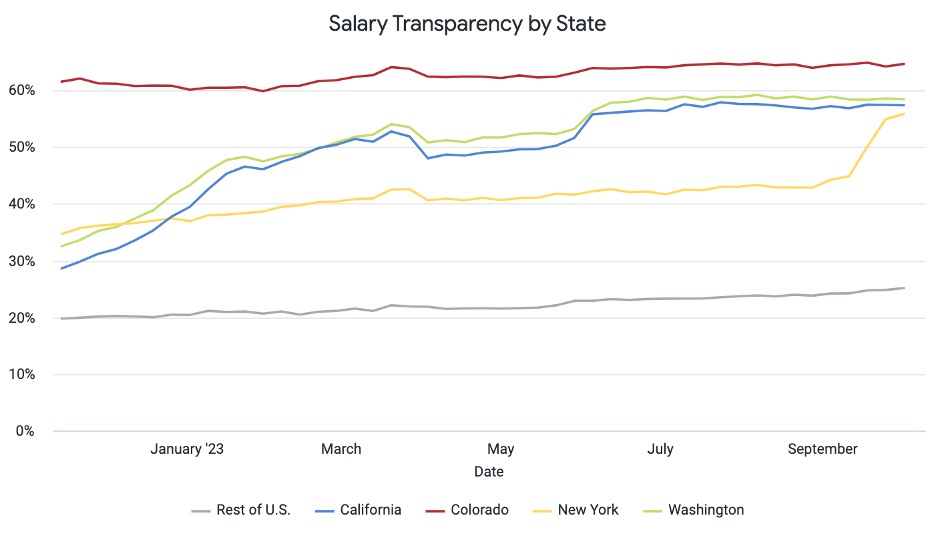
Harness the Power of the Past: 4 Use Cases for Historical Job Market Data
We love expired job listings. And you should, too.
Don’t get us wrong: expired job listings are no good on a job board. But historical jobs data offers immense value for your business intelligence, research, and recruitment efforts. It provides context for what you may currently see in the job market or economy at large.
That’s why we’ve grown our jobs database, JobsIndex, to include more than 40 million historical job listings. Curious to see how you can use this historical job market data? Keep reading.
Use Case #1: Track Compensation Trends Nationwide
Fair compensation has been in the news nonstop the past couple of years, whether via the passing of salary transparency laws or the recent SAG-AFTRA and UAW strikes. Tack on a still-hot labor market, and it’s easy to reason why wages may have changed. But you still need to know how they’ve changed. That’s where historical job market data comes in.
While sites such as the Bureau of Labor Statistics offer this historical compensation data, the reported wages are often estimates, meaning you can’t drill down to see what specific companies actually offered in their listings.
You’re given the zoomed-out map of the job market terrain without a legend. But with JobsIndex, you can see this data, filter it (by company, industry, region, job title, etc.), and act on it accordingly.
For instance, if you’re a hiring manager and want to see how the average wage for data analysts in the US has changed over the past 12 months (Figure 1), you can use JobsIndex. In this case, the data can help ensure you’re A) offering a competitive salary and B) budgeting for likely increases to maximize retention and stay competitive.
Figure 1: Salaries for Data Analysts in the US have held fairly steady throughout 2023.
Plus, because you can filter this data by region, you can A) view the median wages in your metro market and B) compare your market to other regions in the country (Figure 2). Those regional breakdowns are especially useful in the age of hybrid and remote work – when talent competition goes national.
Figure 2: Data analysts’ salaries range greatly between metropolitan markets in California, Utah, and Georgia.
Use Case #2: Research Salary Transparency Changes
In the US, the number of job listings with wage information has gradually increased over the past year. We can largely thank waves of salary transparency legislation for that. But if you’re a researcher or government compliance officer, you need a reliable source to verify and track salary transparency fluctuations.
With JobsIndex, you can see how many listings included salary over the past year – and filter them by position, location, job title, and more (Figure 3). You can also see how quickly employers closed these job postings. In other words, you can see whether listed salaries were correlated with shorter hiring periods. When the average hiring process now lasts 44 days, finding a proven way to shorten it can pay dividends for businesses.
Figure 3: Salary transparency has quickly grown in areas with legislation that enforces it (California, Colorado, New York, and Washington).
Use Case #3: Monitor Company Growth Over Time
When a company posts more job listings, it’s often growing. And while you may notice your competitors sharing more jobs on LinkedIn, that isn’t a very scientific way to track company growth. With historical data, you can see exactly which roles – and how many of them – companies have posted over time (Figure 4).
Figure 4: OpenAI has continued to grow since the launch of its popular ChatGPT product. But it’s not yet hiring at the numbers of Google or Amazon.
From there, you can use that data to fuel business intelligence efforts. For example, you may notice that a company has rapidly grown its sales team within six months. That would likely indicate it has plans to scale in the near future. Or you may see that a tech company has grown its development and engineering functions, which could forecast upcoming product releases or updates.
Tracking this growth can extend beyond individual companies, too. You can also use it to measure industry changes. Interested in how the staffing shortage has affected the senior living industry? Want to know whether the growing popularity of AI has resulted in tech sector growth? Access our JobsIndex, filter job postings by industry, and see what trends emerge.
Use Case #4: Refine Your Job Board’s Lead Gen Strategy
The biggest, most successful job boards use job scraping to drive more traffic to their sites. And for a portion of our clients, that’s the extent of what we do – scrape jobs. But job board leaders and recruitment site owners can also use historical jobs data to inform their sales strategies.
For example, let’s say you run a niche job board that exclusively lists office worker positions. You gain modest returns via CPA and CPC earnings. But you want to grow your revenue.
JobsIndex can help. With it, you can see how many employers have listed positions that fit your criteria over the past year. From there, you can easily create a list of those employers and reach out to them. The takeaway: historical data helps you find the right leads and position yourself as an ideal partner.
Level Up Your Business Intel with High-Quality Job Market Data
In 2023, data drives virtually every decision made by successful companies. That’s why you want quantity and quality. With JobsIndex, you get both.
Our constantly growing database contains more than 40 million historical and live job listings. That’s the quantity. We also scrape listings directly from employer sites and ATSes and clean the data ourselves. There’s the quality.
Plus, we can deliver you this data raw or organize it for you – whatever suits your needs. Interested in seeing the difference several terabytes of jobs data can make for your business? Reach out!



